📍✨ Welcome to Nagasaki, a city with a captivating history that stretches far beyond the devastating events of World War II. Nagasaki is in the southwestern corner of Japan, where ancient traditions, international trade, and heartbreaking tragedy converge. 🌸🌍
At first glance, Nagasaki may be synonymous with the atomic bomb, forever etched in our collective memory as the second city to witness its destructive power. While this event is undoubtedly a significant part of Nagasaki’s story, it is merely a chapter in a much larger narrative that spans centuries. To truly understand Nagasaki, we must peel back the layers of time and immerse ourselves in the city’s past. 📚🌆
Long before the atomic bomb, Nagasaki was a humble fishing village that flourished into a bustling port town. 🎣⚓ Its strategic location on the coast made it an ideal gateway for international trade, attracting merchants worldwide. As you stroll through the city’s narrow streets and vibrant markets, you can still catch glimpses of this cosmopolitan heritage, with remnants of Dutch, Portuguese, and Chinese influences scattered throughout. 🌍🏛️
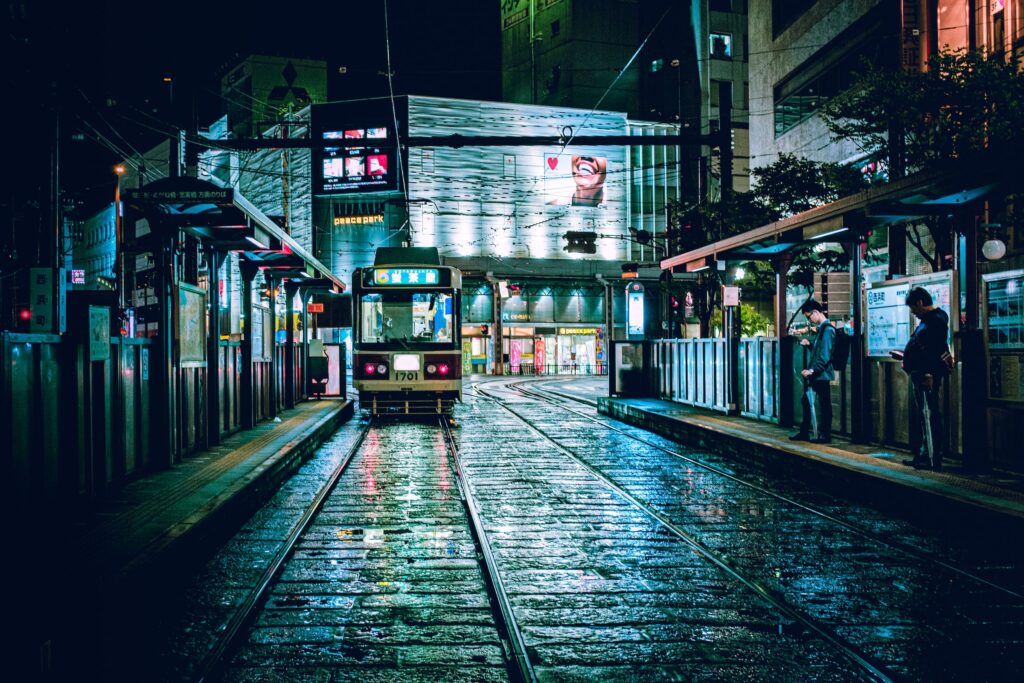
Nagasaki Culture
Nagasaki’s cultural legacy is a testament to its historical significance. The Chinese community of Nagasaki, known as Chinatown, is the oldest in Japan and a thriving hub of vibrant colors, tantalizing aromas, and traditional Chinese architecture. 🏮🇨🇳 The Dutch Slope, lined with charming Dutch-style houses, takes you back to when Nagasaki was the only city in Japan open to foreign trade. 🇳🇱🏘️ And the Oura Church, a symbol of enduring faith, stands as a reminder of the hidden Christians who practiced their religion in secret during the years of persecution. ⛪🙏
While Nagasaki’s history is awe-inspiring, it is essential to approach it with sensitivity and respect. The city’s scars from the atomic bomb serve as a solemn reminder of the devastating consequences of war and the importance of peace. As you explore the Peace Park and Atomic Bomb Museum, you will encounter stories of resilience, hope, and the pursuit of a world free from nuclear weapons. It is a humbling experience that deepens our understanding of humanity’s capacity for both destruction and healing. ☮️💔💫
A city Not Defined By Its Past Tragedies
But Nagasaki is not defined solely by its past tragedies; it is a city that has risen from the ashes, rebuilding itself with strength, determination, and an unwavering spirit. Today, Nagasaki embraces a vibrant cultural scene, blending tradition with modernity. The city’s festivals, such as the spectacular Kunchi Festival, showcase its people’s dynamic energy and passion. At the same time, the Nagasaki Lantern Festival bathes the streets in a mesmerizing glow, illuminating the city with a magical ambiance. 🎆🎊✨
So, dear readers, as we embark on this journey through Nagasaki’s fascinating past, let us do so with open minds and hearts. Let us honor the resilience of its people, the richness of its cultural heritage, and the hope for a future where peace prevails. Together, let us delve into the stories that have shaped Nagasaki and, in doing so, discover a deeper appreciation for the power of history, the strength of humanity, and the enduring spirit of this extraordinary city. 🌸🌍💖
Early History
Step into the captivating history of Nagasaki, a city that rose from humble origins as a small fishing village to become a bustling trading port of immense significance. Picture this: It’s the 14th century, and Nagasaki sits nestled along Japan’s coastline, its natural harbor beckoning ships from afar. Little did anyone know then that this unassuming village would soon play a pivotal role in shaping Japan’s destiny.
Fast forward to the 16th century, and Nagasaki is at the epicenter of an exciting era of cultural exchange and international intrigue. The Nanban trade, a term used to describe Japan’s encounters with the outside world, brought Portuguese traders and Christian missionaries to the shores of Nagasaki. These intrepid explorers introduced Japan to a wealth of new ideas, goods, and beliefs, forever altering the course of history.
Imagine the sights and sounds of bustling marketplaces where exotic spices, precious silks, and curious trinkets from distant lands exchanged hands. With its strategic location and cosmopolitan atmosphere, Nagasaki became the vibrant heart of this dynamic trade network. The city thrived as merchants from Europe and China flocked to its shores, eager to partake in the lucrative opportunities that awaited them.
The Story Goes On
But the story doesn’t end there. As the Dutch East India Company took the reins of Nagasaki’s trade, they left an indelible mark on the city’s landscape and culture. Enter Dejima, an artificial island where the Dutch set up their base of operations.
Picture a tiny island bustling with activity as goods and ideas flowed between the Dutch and the Japanese. Here, the Dutch traders brought with them not just valuable commodities but also a wealth of scientific knowledge and expertise that would profoundly impact Japan’s technological advancement.
So, fellow adventurers, if you find yourself wandering the historic streets of Nagasaki, be sure to visit Dejima. Step back in time and witness the fascinating legacy of the Dutch traders and their transformative influence on Japan. Explore the meticulously reconstructed buildings, walk the narrow alleys, and let your imagination transport you to a bygone era of trade, discovery, and cultural fusion.
As you immerse yourself in Nagasaki’s rich tapestry of history, recall that the city’s early years were impressive. Nagasaki’s destiny took shape through the ebb and flow of international relations, cultural encounters, and the indelible mark left by remarkable individuals, all stemming from its modest beginnings as a humble fishing village.
Let The History Unfold Before You
So, embrace the allure of Nagasaki’s fascinating past, and let its vibrant history unfold before your very eyes. Immerse yourself in the tales of trade, exploration, and enlightenment that have left an enduring legacy. And as you explore the enchanting streets and soak up the atmosphere of this extraordinary city, remember to cherish the spirit of adventure that brought Nagasaki to the forefront of Japan’s historical narrative.
Take advantage of the opportunity to visit Dejima, where the Dutch traders made their mark on Japan’s history. Explore the fascinating intertwining of cultures and witness firsthand the impact of the Dutch’s scientific knowledge and trading experience on Japan’s technological development. It’s a journey through time that will leave you awe-inspired and enriched by the remarkable stories that unfolded on these shores.
Nagasaki During the Edo Period
During the Edo period, Japan adopted a policy of sakoku, which aimed to limit contact with the outside world. Nagasaki, however, remained Japan’s only window to the Western world, with its port still open to foreign trade.
During that period, Nagasaki played a pivotal role in Japan’s trade with China and Europe, and the authorities established the Nagasaki Magistrate’s Office to regulate commerce. The city witnessed a flourishing cultural and religious diversity, with a notable increase in the Christian population, including Hidden Christians who practiced their faith in secrecy.
Tip: Visit the Oura Church, Japan’s oldest standing Christian church, and learn about the struggles of the Hidden Christians during the Edo period. The church’s design incorporates elements of both Western and Japanese architecture.
Nagasaki During the Meiji Restoration
The Meiji Restoration significantly impacted Nagasaki, and the city quickly became a major industrial center and transportation hub. The Mitsubishi Shipbuilding Company established its headquarters in Nagasaki, and the city’s port played a crucial role in developing Japan’s navy.
The city also saw the arrival of Westerners, including Thomas Glover, who played a significant role in Japan’s industrialization. Hashima Island, located off the coast of Nagasaki, became a symbol of Japan’s rapid industrialization, with its population of coal miners.
Tip: Visit Hashima Island, also known as “Battleship Island,” and learn about the harsh conditions the miners faced during the island’s coal-mining heyday. The island’s unique architecture and abandoned buildings provide an eerie glimpse into Japan’s past.
Nagasaki During World War II
Nagasaki’s role in World War II ended on August 9, 1945, when an atomic bomb destroyed the city codenamed “Fat Man.” The bomb exploded over the city’s Urakami Valley, killing tens of thousands and leaving the city in ruins. The city’s Ground Zero, now known as the Nagasaki Peace Park, serves as a memorial to the victims of the atomic bomb and a reminder of the horrors of war.
Tip: Visit the Nagasaki Atomic Bomb Museum and the Nagasaki National Peace Memorial Hall for the Atomic Bomb Victims to learn about the devastating impact of nuclear weapons on people’s lives.
The Nagasaki Atomic Bomb Museum is a solemn but essential stop on any Nagasaki itinerary. The museum provides a heart-wrenching look at the consequences of the atomic bomb, with exhibits detailing the immediate and long-term effects of the bombing on the people of Nagasaki.
Visitors can see artifacts from the blast, such as damaged clothing and twisted metal, as well as photographs and personal accounts from survivors. It’s a stark reminder of the horrors of nuclear warfare and the importance of peace.
Nagasaki National Peace Memorial Hall
For anyone interested in learning about the bombing, visiting the Nagasaki National Peace Memorial Hall for the Atomic Bomb Victims is a must. With its serene and captivating ambiance, this site serves as a tribute to the victims of the bombing and strives to promote peace and understanding.
Inside the hall, visitors can see displays about the bombing and its aftermath and listen to personal testimonies from survivors. The hall also has a beautiful garden and a memorial wall inscribed with the names of those who died in the bombing. It’s a peaceful and moving place that pays tribute to the resilience of the human spirit.
Tip: Consider taking a day trip to Hashima Island, also known as “Battleship Island,” to see the remains of the island’s former coal mining community.


Hashima Island
Hashima Island is a small, abandoned island off the coast of Nagasaki that was once home to a thriving coal mining industry. At its peak, the island was home to more than 5,000 people, making it one of the most densely populated places in the world.
Today, the island is a ghost town, with the remains of its abandoned buildings and factories serving as a haunting reminder of its past. A trip to Hashima Island is a fascinating and eerie look at a deserted industrial community and the people who lived and worked there.

Our Nagasaki Journey Is Close To The End
🎉🌸 And that concludes our journey through the captivating history of Nagasaki! It has been an incredible adventure, unearthing the hidden gems and untold stories that make this city so remarkable. As we come to the end of this blog post, let’s take a moment to reflect on the wonders we’ve encountered and the memories we’ve made. 🌍💫
Nagasaki has transformed itself from a small fishing village to a thriving metropolis, all while preserving its cultural heritage and embracing the lessons of its past. Today, it stands as a testament to the resilience and spirit of its people, who have rebuilt and revitalized the city with unwavering determination. 🏙️🌆
From the moment you set foot in Nagasaki, you’ll feel a warm embrace, as if the city is excited to share its stories with you. The historical and cultural attractions are abundant, offering a glimpse into a profoundly moving and astonishingly beautiful world. Whether you stand in awe at the Peace Park, explore the depths of the Atomic Bomb Museum, or savor the flavors of Nagasaki’s delectable cuisine, every experience will leave an indelible mark on your heart. ❤️🍜🗺️
The Past, The Present And The Future
But Nagasaki is not just about its past; it is a city that thrives in the present, welcoming visitors from all corners of the globe. The hospitality of the locals is unparalleled, as they greet you with open arms and genuine smiles. You’ll feel like a part of the community, connecting with the people who call Nagasaki home and immersing yourself in their traditions, festivals, and daily life. 🤝🌸🎊
Nature lovers will also find solace in Nagasaki’s breathtaking landscapes. Whether it’s a stroll through Glover Garden, where the vibrant colors of the flowers dance in the breeze, or a hike up Mount Inasa, rewarding you with panoramic views of the city and bay below, Nagasaki’s natural beauty is a sight to behold. 🌺🏞️🌅
So, my dear readers, it’s time to pack your bags, book your tickets, and embark on your Nagasaki adventure. Let the city’s rich history and vibrant culture captivate your senses and leave you with unforgettable memories. Whether you’re a history enthusiast, a food lover, a nature seeker, or a curious traveler, Nagasaki has something special in store for you. 🎟️✈️❤️
And hey, if you’ve already enjoyed visiting Nagasaki, we would love to hear from you! Share your thoughts, stories, and recommendations in the comments below. Your experiences will undoubtedly inspire and guide fellow travelers on their Nagasaki escapades. Together, let’s create a community of adventurers and storytellers who celebrate the wonders of this remarkable city. 📝📸🌟
FAQ: Exploring The Fascinating History Of Nagasaki: A Journey Back in Time
Q1: How can I get to Nagasaki, and what transportation options are available?
A: Travelers can reach Nagasaki by train, bus, or plane. The city is accessible by train from major Japanese cities and has an airport with domestic and limited international flights.
Q2: Are there English-speaking guides or tours available in Nagasaki for non-Japanese speakers?
A: Yes, Nagasaki offers English-speaking tour guides and tours catering to non-Japanese speakers. These guides can provide valuable insights into the city’s history.
Q3: What are the best times to visit Nagasaki for historical exploration?
A: While Nagasaki is captivating year-round, spring and autumn are popular due to milder weather. The spring cherry blossoms and autumn foliage add charm, but each season offers unique experiences.
Q4: Can I explore Nagasaki’s historical sites and museums in a single day, or should I plan for a more extended stay?
A: Nagasaki’s historical exploration can be tailored to your schedule. A single day can cover many key sites, but those with a more profound interest may want to plan for a more extended stay.
Q5: Are there any particular cultural events or festivals related to Nagasaki’s history that I should be aware of?
A: Nagasaki hosts several cultural events and festivals throughout the year. The Nagasaki Kunchi Festival, held in October, is especially famous for its blend of Japanese and Dutch influences.
Q6: How can I learn more about the stories and experiences of Nagasaki’s residents during World War II and the atomic bomb?
A: The Atomic Bomb Museum and Peace Park offer personal stories, artifacts, and exhibitions related to the experiences of Nagasaki’s residents during that period.
Q7: Are accommodations available near historical sites, or should I stay in the city center?
Do You Have Any Other Questions?
Let Us Know In The Comment Section Or On Social Media
A: Nagasaki offers a range of accommodations, both near historical sites and in the city center. Your choice may depend on your preferences for proximity and atmosphere.
Q8: Can I purchase souvenirs related to Nagasaki’s history, and where are the best places to find them?
A: Yes, Nagasaki offers a variety of historical-themed souvenirs, including replicas, books, and traditional crafts. Look for them at local shops, especially near historical sites.
Q9: Is there an ideal time of day to visit historical sites to avoid crowds and get the best experience?
A: Early morning visits can help avoid crowds, especially at popular sites like Dejima and the Atomic Bomb Museum. These hours can provide a quieter and more reflective experience.
Q10: Are there any local delicacies or dishes I must try while exploring Nagasaki’s history?
A: Absolutely! Nagasaki is known for its unique dishes like champon (noodle dish), Sara udon (crispy noodle dish), and castella cake. Exploring Nagasaki’s history and cuisine go hand in hand, offering a delightful cultural experience.
Exploring the history of Nagasaki is a rewarding journey filled with historical sites, cultural experiences, and opportunities for reflection. These questions cover a range of traveler interests and practical considerations when visiting this fascinating city.
How to Get to Nagasaki
| Starting Point | Transportation Mode | Travel Time | Details |
|---|---|---|---|
| Tokyo | Car | Approximately 10-12 hours | Drive south on the Tomei Expressway and Kyushu Expressway. It’s a long journey but allows flexibility. |
| Bus | Approximately 15-18 hours | Take an overnight bus from Tokyo to Nagasaki. Travel times may vary based on stops and traffic. | |
| Train | Approximately 7-8 hours | Board a Shinkansen from Tokyo to Hakata Station, then transfer to a limited express train to Nagasaki Station. | |
| Air | Approximately 2 hours | Direct flights are available from Tokyo Haneda Airport (HND) to Nagasaki Airport (NGS). | |
| Osaka | Car | Approximately 5-6 hours | Drive south on the Meishin Expressway and Kyushu Expressway to Nagasaki. |
| Bus | Approximately 7-9 hours | Take an overnight bus from Osaka to Nagasaki. Travel times may vary based on stops and traffic. | |
| Train | Approximately 4-5 hours | Board a Shinkansen from Shin-Osaka Station to Hakata Station, then transfer to a limited express train to Nagasaki Station. | |
| Air | Approximately 1.5 hours | Direct flights are available from Osaka Itami Airport (ITM) to Nagasaki Airport (NGS). | |
| Nagoya | Car | Approximately 6-7 hours | Drive south on the Tomei Expressway and Kyushu Expressway to Nagasaki. |
| Bus | Approximately 8-10 hours | Take an overnight bus from Nagoya to Nagasaki. Travel times may vary based on stops and traffic. | |
| Train | Approximately 5-6 hours | Board a Shinkansen from Nagoya Station to Shin-Osaka Station, then transfer to another Shinkansen to Hakata Station. Finally, transfer to a limited express train to Nagasaki Station. | |
| Air | Approximately 2 hours | Direct flights are available from Chubu Centrair International Airport (NGO) to Nagasaki Airport (NGS). |
Food For Your Delights
Kappo Higuchi Tsukimachi branch
- Cuisine: Japanese, Japanese/General, Japanese Sosaku (creative cuisine)
- Average Price: 1,500 JPY
- Opening Hours: Dinner 5:00 pm – 10:00 pm (last order 9:30 pm), Lunch 11:00 am – 3:00 pm (last order 2:30 pm)
- Closed: December 31st, January 1st
- English Services: English menu available
Taverna Kuriya
- Cuisine: Italian, Italian/French, Italian, Pasta, Pizza
- Average Price: 1,000 JPY
- Opening Hours:
- [Sunday, Tuesday – Saturday, Holidays, Day Before Holidays] Lunch 11:00 am – 2:30 pm (last order 2:00 pm)
- [Sunday, Wednesday, Thursday, Saturday, Holidays, Day Before Holidays] Dinner 5:30 pm – 9:00 pm (last order 7:30 pm)
- Closed: Monday (Closed for dinner every Tuesday and Friday)
- English Services: Unknown
Resutoran-oriibu (Restaurant Olive – レストラン オリーブ)
- Cuisine: Innovative/Fusion, Sosaku (creative), General, French, Western Sosaku (creative cuisine)
- Average Price: 3,500 JPY
- Opening Hours:
- Dinner 5:30 pm – 9:30 pm (last order 8:00 pm)
- Lunch 11:30 am – 2:30 pm (last order 2:00 pm)
- Closed: Irregular (Available for private use for groups etc.)
- English Services: English menu available
Matte Label
- Cuisine: Izakaya (Japanese tavern), Taverns, General, Pasta, Western Teppanyaki (iron griddle grilling)
- Average Price: Dinner: 4,000 JPY, Lunch: 1,700 JPY
- Opening Hours:
- [Sunday, Monday, Wednesday, Thursday, Holidays, Day Before Holidays] Dinner 6:00 pm – 10:30 pm
- [Sunday, Monday, Wednesday – Saturday, Holidays, Day Before Holidays] Lunch 11:00 am – 3:00 pm
- [Friday, Saturday] Dinner 6:00 pm – 11:00 pm
- Closed: Tuesday
- English Services: Unknown
Wine Kitchen Hana Hana (ワインキッチン 華花)
- Cuisine: Dining Bar, Dining bar, General, Western Sosaku (creative cuisine), Wine
- Average Price: Dinner: 2,500 JPY, Lunch: 1,000 JPY
- Opening Hours:
- [Weekday, Saturday, Holidays, Day Before Holidays] Dinner 6:00 pm –
- [Weekday, Saturday] Other 11:30 am – 2:00 pm
- Closed: None
- English Services: Unknown
Japanese Restaurant Koto (和食レストラン 古都)
- Cuisine: Japanese, Japanese/General, Udon (noodles), Donburi (rice bowl)
- Average Price: Dinner: 1,500 JPY, Lunch: 1,000 JPY
- Opening Hours:
- [Sunday, Tuesday – Saturday, Holidays, Day Before Holidays] 11:00 am – 9:30 pm (last order 8:45 pm), Lunch 11:00 am – 3:00 pm
- Closed: Monday
- English Services: Unknown
Katsushika (勝鹿)
- Cuisine: Japanese, Japanese/General, Tempura (battered, fried seafood and vegetables), Katsudon (fried pork cutlet bowl)
- Average Price: Dinner: 1,000 JPY, Lunch: 1,000 JPY
- Opening Hours: Dinner 5:00 pm – 9:00 pm (last order 8:30 pm), Lunch 11:30 am – 3:00 pm
- Closed: None (Opened during the New Year’s holiday without break)
- English Services: Unknown
Kiyose Cuisine Kakkaku (季寄料理 赫々)
- Cuisine: Kaiseki (course menu), Japanese/General, Sashimi (raw fish), Seafood, Kaiseki (traditional multi-course meal)
- Average Price: 1,500 JPY
- Opening Hours:
- [Tuesday – Saturday, Day Before Holidays] Dinner 5:30 pm – 10:00 pm
- [Sunday, Tuesday – Saturday, Holidays, Day Before Holidays] Lunch 11:30 am – 2:00 pm
- [Sunday, Holidays] Dinner 5:30 pm – 9:30 pm
- Closed: Monday (February will be closed except on the 22nd and 26th)
- English Services: Unknown
Kushikatsu Midori (串かつ 美ど里)
- Cuisine: Japanese, Japanese/General, Tonkatsu (fried pork cutlet), Kushiage (deep-fried skewers)
- Average Price: Dinner: 1,700 JPY, Lunch: 900 JPY
- Opening Hours:
- [Sunday – Wednesday, Friday, Saturday] Dinner 5:00 pm – 9:00 pm (last order 8:20 pm), Lunch 11:00 am – 2:00 pm (last order 1:30 pm)
- Closed: Thursday
- English Services: Unknown
Roan Nagasaki branch (露菴 長崎店)
- Cuisine: Buffet, Buffet/General, General, Others
- Average Price: 1,793 JPY
- Opening Hours:
- [Weekday] Dinner 5:30 pm – 9:00 pm (last order 8:15 pm), Lunch 11:00 am – 3:30 pm (last order 3:00 pm)
- [Sunday, Saturday, Holidays] Dinner 4:30 pm – 9:00 pm (last order 8:15 pm), Lunch 11:00 am – 4:30 pm
- Closed: Irregular (It conforms to the holidays of [youme Town Yume Saito])
- English Services: Unknown
Sushi Dining Tenku Garden Terrace Nagasaki Hotel & Resort (鮨ダイニング 天空 ガーデンテラス長崎ホテル&リゾート)
- Cuisine: Sushi, Japanese/General, Sushi, Sousaku Sushi (creative sushi)
- Average Price: Dinner: 8,640 JPY, Lunch: 3,240 JPY
- Opening Hours:
- [Sunday – Wednesday, Friday, Saturday, Holidays, Day Before Holidays] Dinner 5:00 pm – 10:00 pm (last order 9:00 pm), Lunch 11:00 am – 3:00 pm (last order 2:00 pm)
- Closed: Thursday
- English Services: English-speaking staff available
Sushi restaurant Genroku (すし処 元禄)
- Cuisine: Sushi, Japanese/General, Sashimi (raw fish), Seafood, Sushi
- Average Price: Dinner: 10,000 JPY, Lunch: 2,000 JPY
- Opening Hours:
- [Sunday – Tuesday, Thursday – Saturday, Holidays, Day Before Holidays] Dinner 5:00 pm – 10:00 pm, Lunch 12:00 pm – 2:30 pm (last order 2:00 pm)
- Closed: Wednesday
- English Services: Unknown
Charcoal-grilled vegetable roll skewers and dumplings Hakata Uzumaki Nagasaki Shianbashi store (炭火野菜巻き串と餃子 博多うずまき 長崎思案橋店)
- Cuisine: Izakaya (Japanese tavern), Taverns
- Average Price: Varies
- Opening Hours: Dinner 4:00 pm – 11:55 pm (last order 11:00 pm)
- Closed: Irregular
- English Services: English menu available
Nagahama Ramen Kotaro (長浜ラーメン こたろう)
- Cuisine: Ramen, Ramen (noodles), General, Shoyu Ramen (soy sauce ramen), Tonkotsu Ramen (pork broth ramen)
- Average Price: Dinner: 1,200 JPY, Lunch: 650 JPY
- Opening Hours:
- [Sunday, Monday, Wednesday – Saturday, Holidays, Day Before Holidays] 11:00 am – 11:00 pm (last order 10:30 pm), Lunch 11:00 am – 3:00 pm
- Closed: Tuesday (If Tuesday is a national holiday, we will be closed on Wednesday)
- English Services: Unknown
Restaurant Forest Garden Terrace Nagasaki Hotel & Resort (レストランフォレスト ガーデンテラス長崎ホテル&リゾート)
- Cuisine: General, Western, General, French, Italian
- Average Price: 2,500 JPY
- Opening Hours: Dinner 5:00 pm – 10:00 pm (last order 9:00 pm), Lunch 11:00 am – 3:00 pm (last order 2:00 pm)
- Closed: None
- English Services: English-speaking staff available
Teppanyaki Dining Chikusai Garden Terrace Nagasaki Hotel & Resort (鉄板焼ダイニング竹彩 ガーデンテラス长崎ホテル&リゾート)
- Cuisine: Teppanyaki, Yakiniku, Steak, Teppanyaki (iron griddle grilling), Wine
- Average Price: 3,300 JPY
- Opening Hours: Dinner 5:00 pm – 10:00 pm (last order 9:00 pm), Lunch 11:00 am – 3:00 pm (last order 2:00 pm)
- Closed: None
- English Services: English-speaking staff available
Yakinniku Kakura Nagasaki Doza store (焼肉かくら 长崎銅座店)
- Cuisine: Yakiniku (Japanese BBQ), Yakiniku, Steak
- Average Price: 1,200 JPY
- Opening Hours: Dinner 5:00 pm – 12:00 am (last order 11:30 pm), Lunch 11:30 am – 3:00 pm
- Closed: Irregular
- English Services: Unknown
Charcoal grill Dining Hikiya (炭火ダイニング ひいき家)
- Cuisine: Izakaya (Japanese tavern), Taverns, General, Sashimi (raw fish), Seafood, Japanese Sosaku (creative cuisine)
- Average Price: 4,000 JPY
- Opening Hours: [Weekday, Saturday, Holidays, Day Before Holidays] 5:30 pm – 3:00 am
- Closed: Sunday (Banquet reservation only required consultation)
- English Services: Unknown
Ikesu Kappo Suigetsu (いけす割烹 水月)
- Cuisine: Japanese, Japanese, Sashimi (raw fish), Seafood, Whale Meat
- Average Price: Dinner: 3,500 JPY, Lunch: 1,000 JPY
- Opening Hours: [Weekday, Saturday, Holidays, Day Before Holidays] 11:30 am – 11:00 pm (last order 10:00 pm)
- Closed: Sunday (* If Monday is a public holiday, it is open on Sundays and closed on Mondays)
- English Services: Unknown
These restaurants offer a diverse range of Japanese and international cuisines. Be sure to try some of the local specialties and indulge in a culinary adventure during your visit to Nagasaki! 🍣🍝🍜🍷
When to Visit
Nagasaki offers a diverse range of experiences throughout the year. When planning your visit, consider the following:
- Spring (March to May): Spring in Nagasaki brings pleasant weather with cherry blossoms in full bloom. This season is perfect for sightseeing and enjoying the city’s cultural attractions.
- Summer (June to August): The summer months are ideal if you prefer beach activities and outdoor adventures. Enjoy water sports, relax on the beach, and savor the warm weather.
- Autumn (September to November): Nagasaki’s fall foliage is stunning. The cooler temperatures make it an excellent time for exploring historical sites and enjoying local cuisine.
- Winter (December to February): While winters are relatively mild in Nagasaki, it’s a perfect time to experience the city’s illuminations, festivals, and hot springs.
Local Hangout Spots
Nagasaki offers a variety of experiences for travelers of all interests. For surfers and beach enthusiasts, the following locations are must-visit spots:
- Nagasaki Seaside: Experience the thrill of catching waves and watching professional surfers at Nagasaki’s seaside, which boasts consistent waves and multiple breaks for surfers of all skill levels. Immerse yourself in the vibrant surf culture of Nagasaki.
Top Attractions in Nagasaki
Explore these top attractions in Nagasaki to make the most of your visit:
- Atomic Bomb Museum: A sad but essential visit, this museum educates visitors about the history and impact of the atomic bomb that hit Nagasaki during World War II.
- Glover Garden: Discover the historical significance of this open-air museum, where you can explore Western-style residences and lush gardens.
- Nagasaki Peace Park: Pay your respects at the Peace Park’s Peace Statue and the Fountain of Peace while reflecting on Nagasaki’s message of anti-nuclear peace.
- Dejima: Explore the fascinating history of Dejima, an artificial island that served as the sole point of contact between Japan and the Western world during its period of isolation.
- Nagasaki Lantern Festival: If you’re visiting in February, don’t miss the Nagasaki Lantern Festival, which lights up the city with colorful lanterns, parades, and cultural performances.
Things to Do in Nagasaki
Nagasaki offers a wide range of activities to suit various interests:
- Nagasaki Atomic Bomb Memorial: Pay your respects and reflect on the tragic history of Nagasaki.
- Mount Inasa: Take a cable car ride to the summit for breathtaking views of Nagasaki Bay and the city below.
- Gunkanjima (Battleship Island): Explore the eerie, abandoned island that served as a coal mining facility in the early 20th century.
- Nagasaki Kunchi Festival: If your visit coincides with the festival in October, enjoy the colorful parades, traditional dances, and music performances.
- Chinatown: Savor delicious Chinese cuisine in Nagasaki’s vibrant Chinatown.
- Huis Ten Bosch: Experience a taste of the Netherlands in Japan at this theme park, complete with Dutch-style architecture and beautiful gardens.
Remember to tailor your visit to Nagasaki based on your interests and the season you choose to explore this historically rich and culturally diverse city.
Follow Us And Share Your Thoughts
Don’t forget to follow us on Instagram @s4kurachronicles for more travel inspiration, insider tips, and stunning visuals that will transport you to the enchanting world of Nagasaki. We can’t wait to connect with you and continue our journey together. 🌸📷✨
So, dear wanderers, let the spirit of Nagasaki guide your footsteps, and the stories of its past ignite your imagination. The city awaits, ready to share its tales of resilience, beauty, and hope. Book your trip, embrace the adventure, and let Nagasaki weave its magic around you. 🌍✨🌸
- The Best Waterfalls in Kyushu: Enjoying the Island’s Natural Beauty
- The Best Parks in Tokyo That Will Amaze You
- “Top of the World: Mystical Summit Experience Of Mount Fuji”
- “Kumamoto Serenity: Unmasking The Secrets Of Its Natural Wonders”
- The Best Beach Resorts in Shikoku
Hashima (Gunkanjima) | Nagasaki Attractions | Travel Japan | JNTO
Nagasaki Atomic Bomb Museum | Nagasaki Attractions | Travel Japan | JNTO


